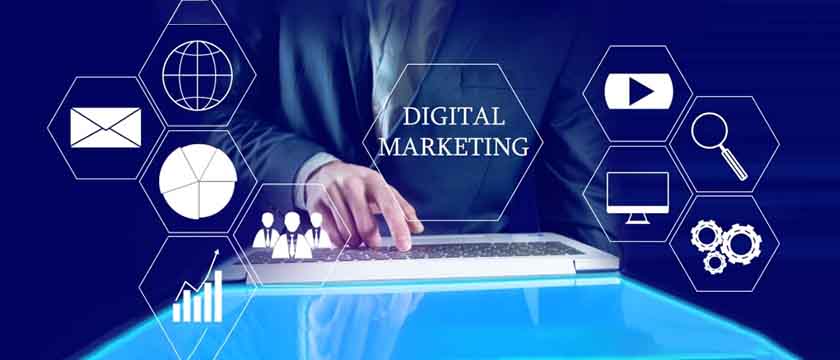In today’s interconnected world, digital marketing has emerged as a cornerstone of business success. It’s the practice of leveraging online platforms to connect with target audiences, build brand awareness, and drive revenue. Whether you’re a startup, a small business, or a large enterprise, understanding digital marketing is essential for thriving in a competitive marketplace. This comprehensive guide explores the key components, strategies, and tools you need to excel in the digital landscape.
What is Digital Marketing?
Digital marketing encompasses all marketing efforts that utilize electronic devices and the internet. Businesses leverage digital channels such as search engines, social media, email, and websites to connect with prospective and current customers. Unlike traditional marketing, digital marketing offers real-time data, targeted outreach, and measurable ROI.
Key Benefits of Digital Marketing
- Global Reach: Reach audiences across the world without geographical limitations.
- Cost-Effectiveness: Achieve significant results with a lower budget compared to traditional advertising.
- Measurable Results: Track performance and make data-driven decisions.
- Targeted Advertising: Reach specific demographics, interests, and behaviors.
- Flexibility: Adapt campaigns quickly based on feedback and data.
Core Components of Digital Marketing
1. Search Engine Optimization (SEO)
SEO is the practice of optimizing your website to rank higher in search engine results pages (SERPs). Higher visibility leads to increased organic traffic.
Key SEO Strategies:
- Keyword research and on-page optimization.
- Building quality backlinks.
- Ensuring mobile-friendly and fast-loading websites.
- Creating valuable and shareable content.
2. Pay-Per-Click Advertising (PPC)
PPC involves running ads where advertisers pay each time a user clicks on their ad. Platforms like Google Ads and Bing Ads dominate this space.
Tips for Successful PPC Campaigns:
- Use compelling ad copy and CTAs.
- Target specific demographics and locations.
- Continuously monitor and optimize campaigns.
- Implement A/B testing for ads.
3. Content Marketing
Content marketing focuses on creating valuable, relevant, and consistent content to attract and engage a target audience. It builds trust and positions your brand as an authority in your industry.
Popular Content Formats:
- Blogs and articles.
- Infographics.
- E-books and whitepapers.
- Videos and podcasts.
4. Social Media Marketing
Social media platforms are powerful tools for brand promotion and audience engagement. Platforms like Facebook, Instagram, Twitter, LinkedIn, and TikTok allow businesses to connect directly with their audience.
Social Media Best Practices:
- Develop a consistent posting schedule.
- Use visuals to increase engagement.
- Leverage paid social ads for targeted reach.
- Monitor and respond to comments and messages.
5. Email Marketing
Email marketing remains a reliable way to nurture leads and maintain customer relationships. Personalized and well-timed emails can significantly boost engagement.
Email Campaign Strategies:
- Use segmentation to target specific groups.
- Craft engaging subject lines and content.
- Automate campaigns for efficiency.
- Track open rates and conversions.
6. Affiliate Marketing
Affiliate marketing involves partnering with individuals or businesses (affiliates) to promote your products or services. Affiliates earn a commission for every sale they drive.
Benefits of Affiliate Marketing:
- Low upfront costs.
- Access to new audiences.
- Performance-based payouts.
7. Analytics and Data Insights
Digital marketing relies heavily on data to measure success and make informed decisions. Tools like Google Analytics, HubSpot, and SEMrush provide detailed insights into audience behavior and campaign performance.
Metrics to Track:
- Website traffic and bounce rates.
- Conversion rates and ROI.
- Engagement rates on social media.
- Email open and click-through rates.
Developing a Digital Marketing Strategy
To succeed in digital marketing, you need a well-structured strategy tailored to your business goals. Here’s a step-by-step approach:
8. Define Your Objectives
- Are you looking to drive sales, generate leads, or increase brand awareness? Clear goals guide your strategy.
9. Understand Your Audience
- Conduct market research to identify your target audience’s demographics, preferences, and pain points.
10. Choose the Right Channels
- Focus on the platforms where your audience spends the most time.
11. Allocate a Budget
- Determine how much to invest in each digital marketing channel.
12. Create Engaging Content
- Develop high-quality content tailored to your audience’s needs.
13. Monitor and Optimize
- Use analytics tools to track performance and adjust campaigns as needed.
The Future of Digital Marketing
Digital marketing is constantly evolving, with trends like artificial intelligence (AI), voice search, and augmented reality (AR) shaping the landscape. Staying ahead of these trends ensures your business remains competitive.
Emerging Trends to Watch:
- AI-powered chatbots and personalization.
- The rise of short-form video content.
- Privacy-centric marketing approaches.
- Greater emphasis on user experience (UX).
Conclusion
Digital marketing offers unparalleled opportunities for businesses to connect with their audiences, build lasting relationships, and achieve their goals. By leveraging the core components, staying updated on trends, and using data to guide decisions, you can create impactful campaigns that drive measurable results. Whether you’re new to digital marketing or looking to refine your strategy, this guide provides the foundation for long-term success.
To learn more or to acquire our services, please contact us at https://paypercampaign.com





